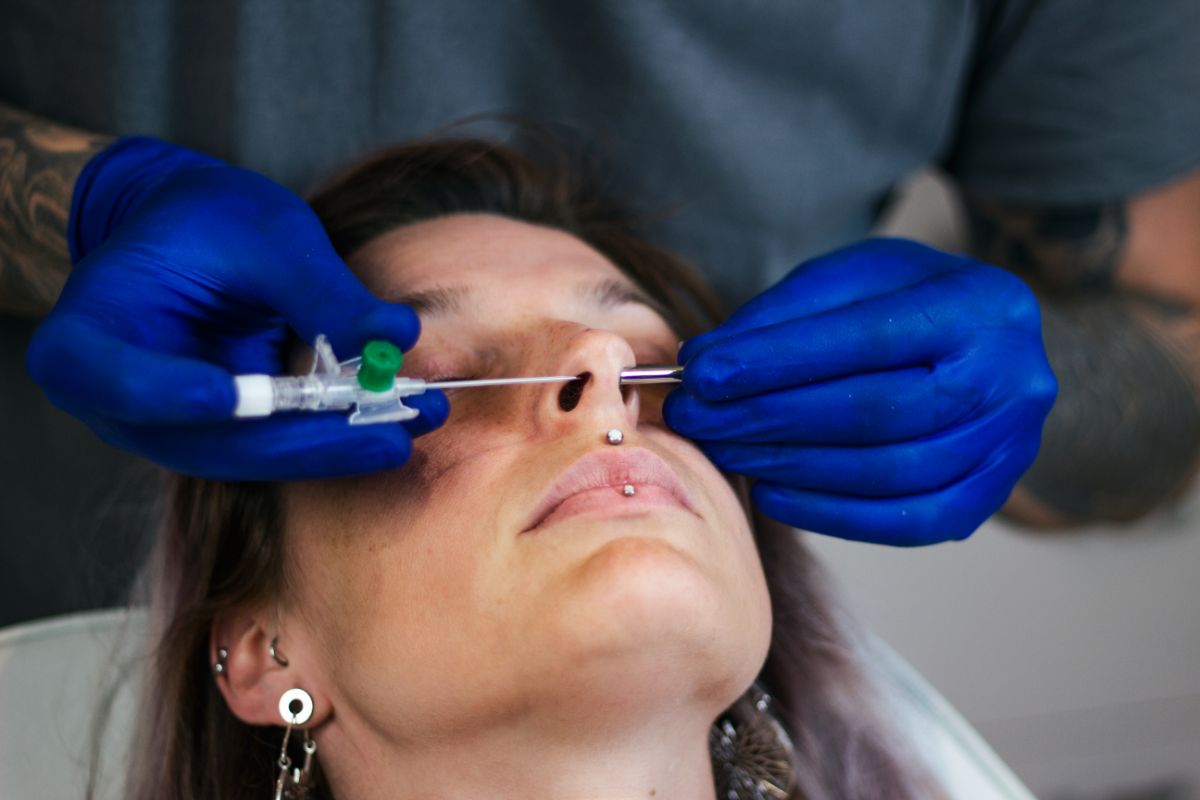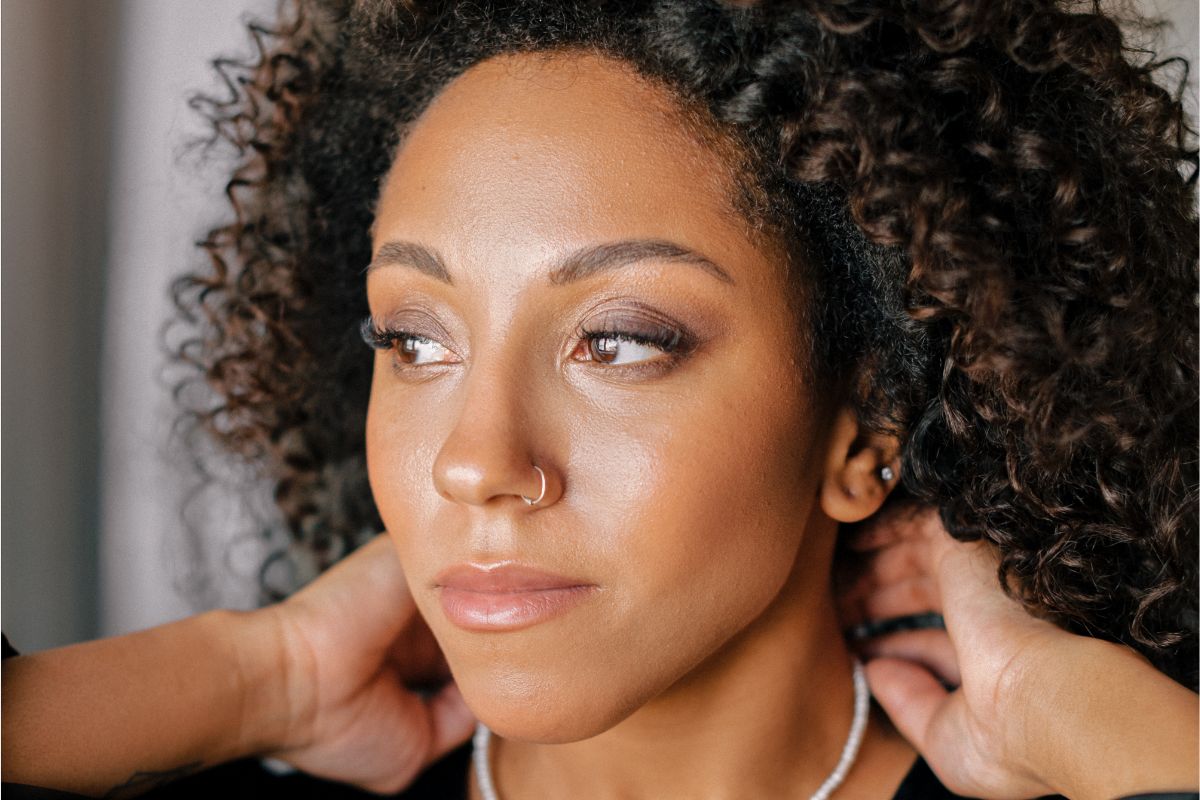Well, the general rule is twice daily, if it’s a brand new one! Do bear in mind that everybody and every body is different: what works as an aftercare routine for one person’s piercing might be far too much or not enough at all for someone else.
One thing to bear in mind is humidity and temperature. Live in a hot, sticky area? You’re probably going to want to clean your piercing more often, especially if you’re taking cold showers or using a fan to stay cool, as these can aggravate the site.
Depending on your lifestyle, the location of the piercing being healed, your own skin type and even what position you sleep in, you might need a more or less intense regimen in order to prevent infection and keep everything nice and clean.

The most important thing to remember is this: do not overclean your piercing! By using a solution that’s too harsh, for instance, or switching between different cleaning products, you can cause irritation. The same goes for cleaning too often!
We would recommend you use Dr. Piercing Aftercare - as a solution, not only does it cleanse the area you’ve had pierced, but it also soothes any redness or irritation, as well as protecting you from infection by keeping the site sterile.
How Often Should I Clean My Helix Piercing?
As you’ll find out below, cartilage is notoriously difficult to heal, and the helix is a piercing in the upper cartilage of your ear, where blood flow is minimal and the site takes a lot longer to recover from being stuck with a needle.
Remember: you should not be touching your piercing directly, unless you’re looking to get an infection. Even thoroughly washed hands can carry contaminants, so avoid it where possible, but if you have to, use alcohol sanitizer!
On the first day of piercing, you should give the helix a thorough clean before you head to bed. Stay away from cream-based formulas, as these are notorious for clogging the site and causing the buildup of bacteria.
Your best bet is to wash twice daily with a simple saline solution, morning and night, and then completely staying away from it at all other times. It could take up to six months to fully heal, so continue for as long as you deem necessary.
It is especially uncomfortable to sleep on your side when you’ve got a helix piercing, so you may have to switch positions for a couple of weeks, especially if you want it to heal quickly so you can switch out for a cute new hoop.
Keep in mind that little lumps, or keloids, are very commonly found after helix piercings - it does not necessarily mean your piercing is infected, but definitely keep an eye on things if you’re worried or experiencing extra pain or discomfort.
How Often Should I Clean My Cartilage Piercing?
Okay, so the first thing to know is that cartilage piercings take way longer to heal and can often look like they’re all healed up before they’ve actually finished. Therefore, you should continue this cleaning routine for between three and six months!
As with the majority of piercings, you want to clean it once or twice a day as required, for a good couple of months following the procedure. All you need is hot salty water (NOT TABLE SALT! FRESH SALT!) - no need to pay over the odds for a tiny bottle of cleaning solution.
You might not know this, but piercings actually heal in reverse, from the outside in. Even though it looks totally clean and healed up from your perspective, it could still be an open wound internally. Basically, it’s better to be safe than sorry!
From the tragus, antitragus, and helix to the forward helix and other fun names for the little bumpy bits of your ears, there are a bunch of different piercings that count as cartilage. Be aware - the lobe is NOT cartilage, and therefore needs different care.
You really need to baby a cartilage piercing and be as careful as you possibly can: anything from brushing your hair to putting on a t-shirt could catch and aggravate it, increasing the healing process to be even longer than it already was.
Likewise, unless you’re allergic or your body is rejecting your cartilage piercing, you should always avoid changing out the jewelry for a new ring or stud until the site is fully healed. Take it out too soon and it could heal over before you replace it!
How Do You Clean The Tongue Frenulum Piercing?
Also known as the oral web or frowney piercing, a tongue frenulum ring, bar or stud has a tendency to ick people out, not least because it’s far more difficult to take care of in the aftermath.
Technically, any piercing inside the mouth is considered a “surface” piercing, which means they’re far more likely to reject or become infected than a standard lobe piercing, for instance.
There are several steps to caring for a frenulum piercing therefore, the most important one being to rinse your mouth several times a day: after eating anything (including a tiny snack) or brushing your teeth, and in the AM and PM every day.
You’ll want to get yourself a specific piercing aftercare rinse, though if you’re struggling to find one of those then antiseptic mouthwash will work, though bear in mind this will probably sting a little bit more!
Another key step is being especially careful when brushing and flossing, as the slightest knock could irritate the piercing or even rip it out, which is NOT pretty and you do NOT want to find that out the hard way.
Plus, because you’ll find that eating is tricky in the first couple of days or even the first week, you will want to get yourself some soft foods to eat whilst it’s starting to heal, and avoid any foods that could be sharp enough to catch your frenulum.





